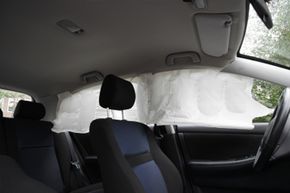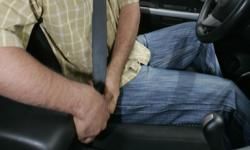In the effort to develop safer cars, it might seem as if automobile manufacturers will stuff an airbag anywhere it will fit. One such recent innovation, the side curtain airbag, has proven to be quite valuable and versatile.
For several years, the side curtain airbag has earned higher safety ratings for passenger cars and minivans. Recently, though, automakers are finding new ways to adapt side curtain technology specifically for niche applications, especially in high-risk vehicles. Drivers of convertibles and SUVs, for example, currently enjoy the benefits of side curtain protection and rollover-specific security. Curtain airbags can also be especially helpful as sub-compacts come into vogue. Though structural integrity of tiny cars is often questioned by consumers and regulators, a new microcar will use curtain airbags to help protect its passengers' necks. If curtain airbags prove effective for rear collisions, they could be instrumental in helping improve public perception of small and efficient cars.
Advertisement
These innovations are quite an achievement over basic airbags, first found in the steering wheel and dashboard to absorb the impact of a crash. Dual front airbags became federally mandated in the United States for the 1998 model year (see How Airbags Work for an overview).
Side curtain airbags are designed to complement traditional airbag systems to create safer vehicles all around. They're currently optional in the United States, although the National Highway Traffic Safety Administration (NHTSA) mandated that all new vehicles must include them to meet more stringent side impact safety standards by 2013 [source: Benton].
In this article, we'll discuss how side curtain airbags' protective features work and show you how they are evolving. Up next, read about how and why side curtain airbags have evolved.
Advertisement



